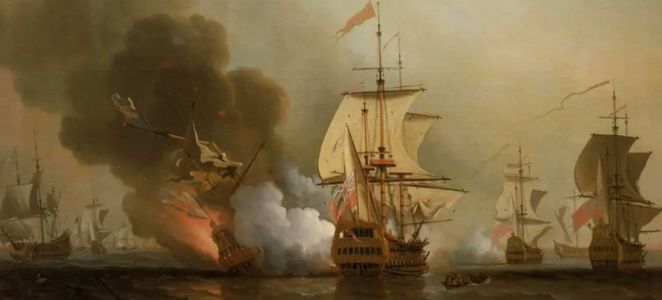 BBC reports that after decades of legal wrangling, the Colombian government has started exploring the wreck of the 18th-century Spanish galleon San José, dubbed the “holy grail of shipwrecks.”
BBC reports that after decades of legal wrangling, the Colombian government has started exploring the wreck of the 18th-century Spanish galleon San José, dubbed the “holy grail of shipwrecks.”
The South American nation has also declared a protected archaeological area around the galleon – which was sunk by the British Royal Navy in 1708 in the Caribbean Sea.
The ship, whose ownership remains contested, was carrying one of the largest hauls of valuables ever lost at sea when it was attacked just outside of the Colombian city of Cartagena. It is estimated to be laden with as much as £16bn ($20bn) in treasure.
The first stage of the research project – described as a “characterization phase” – will use remote sensors to generate images of the site to build an inventory of the archaeological material on the seabed.
Underwater robots will also take readings around the shipwreck, which will be used to inform academic studies, the Colombian Institute of Anthropology and History said.
The Colombian government has said no archaeological excavations are planned in the initial stage of the project.
The San José was a 64-gun, three-masted, three-decked galleon, about 128 feet in length and 40 feet across the beam, built and launched in San Sebastián in the Basque Country in 1698. According to Ann Coats, associate professor of maritime history at the University of Portsmouth in England, the second deck would have been devoted to armaments, a testament to the fact that, at that time, the lines between merchant ships and naval vessels were blurred.
Thanks to Alaric Bond for contributing to this post.

You might want to change the spelling of the headline.
I love the blog.
Yikes. Thanks.
Depth 2,000’ that’s submersibles and robots